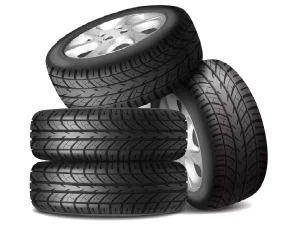How to Change Car Tyres : A Step-by-Step Guide

If you’re a car owner, changing a tyre is a necessary skill to learn. Whether it’s a flat tyre or a tyre blowout, being able to change your car tyre can save you time, money, and prevent you from being stranded on the side of the road. In this article, we’ll guide you through the step-by-step process of changing a car tyre.
Table of Contents
- Introduction
- Precautions Before Changing a Car Tyre
- Essential Tools Needed to Change a Car Tyre
- Step-by-Step Guide to Change a Car Tyre
- Finding a Safe and Flat Location
- Turning Off the Engine and Applying the Handbrake
- Removing the Hubcap and Loosening the Nuts
- Placing the Jack Under the Car
- Raising the Car
- Removing the Tyre
- Mounting the Spare Tyre
- Tightening the Nuts
- Lowering the Car and Finishing Up
- Tips for Maintaining Your Car Tyres
- Conclusion
- FAQs
Precautions Before Changing a Car Tyre
Before you start changing your car tyre, there are a few precautions you should take to ensure your safety.
- Find a safe and flat location to change your tyre. Avoid changing a tyre on a slope or uneven surface as it can cause the car to roll.
- Turn off the engine and engage the handbrake to prevent the car from rolling.
- If possible, place a wedge or chock behind the tyre opposite the one being changed to prevent the car from rolling.
- Wear gloves to protect your hands and use a torch to light up the area where you’re working.
Essential Tools Needed to Change a Car Tyre
To change a car tyre, you’ll need a few essential tools:
- A spare tyre
- A jack
- A lug wrench
- A wheel chock or wedge
- Gloves
- Torch
Step-by-Step Guide to Change a Car Tyre
1. Finding a Safe and Flat Location
As mentioned earlier, find a safe and flat location to change your car tyre. If you’re on a motorway or a busy road, drive to the nearest exit or pull off onto the shoulder.
2. Turning Off the Engine and Applying the Handbrake
Turn off the engine and apply the handbrake to prevent the car from rolling.
3. Removing the Hubcap and Loosening the Nuts
Remove the hubcap or wheel cover from the tyre and use the lug wrench to loosen the nuts on the tyre. Do not remove them completely at this stage.
4. Placing the Jack Under the Car
Place the jack under the car on the designated jacking point. Refer to your car manual for the specific location of the jacking point.
5. Raising the Car
Use the jack to raise the car. Make sure that the car is stable and secure before proceeding.
6. Removing the Tyre
Now, remove the nuts completely and gently pull the tyre off the car.
7. Mounting the Spare Tyre
Place the spare tyre onto the wheel hub and line up the holes. Gently push the tyre onto the hub until it’s flush.
8. Tightening the Nuts
Tighten the nuts by hand until they are snug. Then, use the lug wrench to tighten the nuts further. Tighten the nuts diagon
ally and in a star pattern until they are tight.
9. Lowering the Car and Finishing Up
Use the jack to lower the car and remove it from under the car. Use the lug wrench to tighten the nuts once more. Replace the hubcap or wheel cover.
Congratulations! You’ve successfully changed your car tyre. Don’t forget to get your punctured tyre repaired or replaced as soon as possible.
Tips for Maintaining Your Car Tyres
To ensure your car tyres last longer and perform optimally, follow these tips:
- Check your tyre pressure regularly and maintain the recommended pressure levels.
- Rotate your tyres regularly to promote even wear.
- Avoid overloading your car beyond its capacity as it can cause tyre damage.
- Avoid aggressive driving and sudden braking as it can cause unnecessary tyre wear.
- Replace your tyres once they’ve reached the legal limit.
Conclusion
Changing a car tyre is a skill that every car owner should possess. With this step-by-step guide, you can change your car tyre with ease and confidence. Remember to take necessary precautions, use the right tools, and maintain your car tyres to ensure their longevity and optimal performance.
FAQs
- How often should I check my tyre pressure? It’s recommended to check your tyre pressure once a month.
- Can I drive on a spare tyre for an extended period? No, a spare tyre is only meant to be a temporary solution. Get your punctured tyre repaired or replaced as soon as possible.
- Can I change a tyre on a slope or uneven surface? No, it’s not recommended to change a tyre on a slope or uneven surface as it can cause the car to roll.
- Should I tighten the nuts while the car is raised on the jack? No, it’s recommended to tighten the nuts after the car has been lowered and is on the ground.
- How do I know when it’s time to replace my tyres? You can check the tyre tread depth using a coin. If the tread depth is less than 1.6mm, it’s time to replace your tyres.
